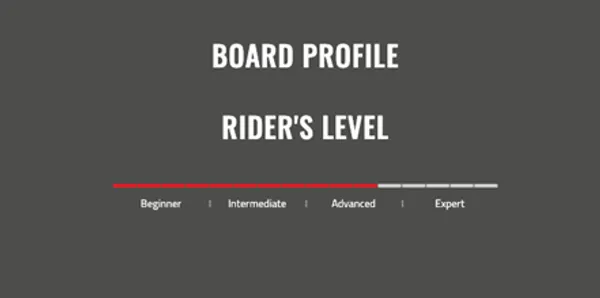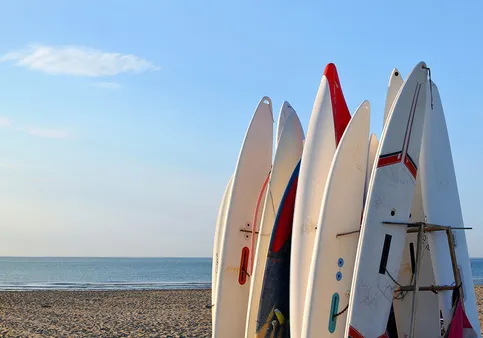Table of Contents
Navigating the world of surfboards requires careful consideration of various factors, from your skill level and body type to your surfing style and budget. By understanding the different types of surfboards available, researching thoroughly, and seeking advice, you can make an informed choice that matches your unique needs and preferences. Remember, the perfect surfboard is one that enhances your surfing experience, allowing you to progress, have fun, and ride the waves with confidence. Embrace the journey of finding the ideal surfboard and unlock the full potential of your surfing.
How to Choose the Right Surfboard for Your Skill Level and Style
I. Things to Consider
Skill Level
- Beginner: Entry-level surfers who have never surfed before. They should choose a stable surfboard that is easy to control.
- Intermediate: Surfers with some experience who are comfortable with basic techniques. They can choose a board that is less stable but offers more maneuverability.
- Advanced: Experienced surfers who are looking for performance and speed. They can opt for a high-performance surfboard that is designed for specific wave conditions.
Surfing Style
- Longboarding: Surfers who enjoy riding long, smooth waves. These surfboards are typically longer and wider, providing stability and glide.
- Shortboarding: Surfers who prefer to perform aerial tricks and maneuvers. Shortboards are more agile and responsive, making them ideal for advanced surfers.
- Funboarding: Surfers who want a versatile board that can handle a variety of conditions. Funboards are a hybrid between longboards and shortboards, offering stability and maneuverability.
Body Size and Weight
- Height: A taller person will need a longer surfboard to maintain stability in the water.
- Weight: A heavier person will need a thicker surfboard with more volume to support their weight.
Wave Conditions
- Small waves: A smaller surfboard with more volume will be easier to paddle and catch waves in smaller conditions.
- Large waves: A longer surfboard with a sharper nose will provide more stability and control in bigger waves.
Budget
- Surfboards can range in price from a few hundred dollars to several thousand dollars. It's important to set a budget before shopping for a surfboard.
II. Different Types of Surfboards
Different Types of Surfboards
Surfboards come in a variety of shapes and sizes, each designed for different types of waves and riding styles. Here are some of the most common types of surfboards:
- Shortboards: Shortboards are the most popular type of surfboard, and they are ideal for experienced surfers who want to perform high-performance maneuvers. They are typically 6 to 7 feet long and have a narrow, pointed nose and a wide, rounded tail.
- Longboards: Longboards are longer than shortboards, typically ranging from 8 to 10 feet in length. They have a wide, rounded nose and a square or rounded tail. Longboards are ideal for beginners because they are more stable and easier to paddle than shortboards.
- Funboards: Funboards are a good choice for intermediate surfers who want a board that is more versatile than a shortboard but still has some performance capabilities. They are typically 7 to 8 feet long and have a wider nose and tail than a shortboard.
- Fish: Fish surfboards are short and wide, with a swallowtail or rounded tail. They are designed for small waves and are known for their maneuverability and speed.
- Gun: Guns are long, narrow surfboards that are designed for big waves. They can be up to 12 feet long and have a pointed nose and a square tail.
When choosing a surfboard, it is important to consider your skill level, the type of waves you will be surfing, and your personal preferences. If you are a beginner, it is best to start with a longboard or a funboard. As you progress, you can move on to a shorter board if you want to perform more advanced maneuvers.
Type of Surfboard | Length | Width | Nose | Tail |
Shortboard | 6-7 feet | 18-20 inches | Narrow, pointed | Wide, rounded |
Longboard | 8-10 feet | 22-24 inches | Wide, rounded | Square or rounded |
Funboard | 7-8 feet | 20-22 inches | Wider than a shortboard | Wider than a shortboard |
Fish | 5-6 feet | 20-22 inches | Wide, rounded | Swallowtail or rounded |
Gun | 10-12 feet | 18-20 inches | Pointed | Square |
No matter what type of surfboard you choose, make sure that it is the right size for you. A surfboard that is too big or too small will be difficult to control and will not allow you to surf to your full potential.
If you are new to surfing, it is a good idea to take a lesson from a qualified instructor. An instructor can help you choose the right surfboard and teach you the basics of surfing.
Surfing is a great way to get exercise, enjoy the outdoors, and have some fun. With a little practice, you can learn to surf like a pro.
How to Choose the Right Surfboard for Your Skill Level and Style
III. Key Points for Different Skill Level
Whether you're a complete beginner or an experienced surfer, choosing the right surfboard is essential for an enjoyable and safe surfing experience. Here are some key points to consider based on your skill level:
Skill Level | Key Considerations | Recommended Surfboard Type |
|---|---|---|
Beginner |
| |
Intermediate |
| |
Advanced |
|
Remember, these are general guidelines, and your personal preferences and surfing style may also influence your choice. It's always a good idea to consult with experienced surfers or visit a reputable surf shop for personalized recommendations.
IV. Tips for Choosing the Right Surfboard
In addition to considering your skill level, here are some additional tips to help you choose the right surfboard:
- Length: Longer boards provide more stability, while shorter boards offer more maneuverability.
- Width: Wider boards are more stable, while narrower boards are faster and more responsive.
- Thickness: Thicker boards have more volume and buoyancy, making them easier to paddle and catch waves. Thinner boards are lighter and more performance-oriented.
- Shape: Different shapes, such as rounded noses, pointed noses, and fish tails, can affect the board's performance in different wave conditions.
- Materials: Surfboards are typically made from fiberglass, epoxy, or a combination of both. The materials used can impact the board's weight, durability, and flex.
By following these tips and considering your individual needs and preferences, you can choose the perfect surfboard to help you progress your surfing skills and enjoy the waves.
V. Key Points for Different Style
When selecting a surfboard, consider your skill level and riding style. Beginners may prefer a longer, wider board with more stability, while experienced surfers might opt for a shorter, narrower board with increased maneuverability. Additionally, the type of waves you typically surf will influence your choice. For example, a board designed for small waves will differ from one intended for larger waves.
Here are some key points to keep in mind when choosing a surfboard for different styles:
- Shortboards: Ideal for experienced surfers who prioritize speed and maneuverability. They are typically shorter and narrower than other types of surfboards, making them more responsive and agile.
- Longboards: Suitable for beginners and those who prefer a more stable and relaxed ride. They are longer and wider than shortboards, providing increased stability and buoyancy.
- Funboards: A versatile option for surfers of all skill levels, offering a balance of stability and maneuverability. They are typically shorter and wider than longboards but longer and narrower than shortboards.
- Hybrids: Combine features of different types of surfboards, providing a versatile option for surfers who want a board that can handle a variety of conditions.
- Fish: Designed for small waves, fish surfboards are short and wide with a swallowtail shape. They are highly maneuverable and provide excellent speed in small waves.
Ultimately, the best way to choose the right surfboard is to try out different models and see what works best for you. Consider your skill level, riding style, and the types of waves you typically surf when making your decision.
Here are some additional tips for choosing the right surfboard:
- Consider your height and weight: A surfboard that is too small will be difficult to paddle and control, while a board that is too large will be slow and cumbersome.
- Think about the conditions you typically surf in: If you surf in small waves, you will need a board that is designed for those conditions. If you surf in larger waves, you will need a board that is more stable and can handle the power of the waves.
- Get advice from a surf instructor or experienced surfer: They can help you choose a board that is right for your skill level and riding style.
By following these tips, you can choose the right surfboard that will help you progress your surfing skills and have a great time in the water.
VI. Conclusion
Selecting the right surfboard is a journey of self-discovery, understanding your surfing style, and matching it with the perfect board. Embrace the learning process, experiment with different types of surfboards, and don't be afraid to seek guidance from experienced surfers or professionals at your local surf shop. Remember, the ideal surfboard is the one that enhances your surfing experience, allowing you to progress, catch waves with ease, and ride with confidence. So, dive into the world of surfing, embrace the stoke, and let the waves guide you to your perfect match.